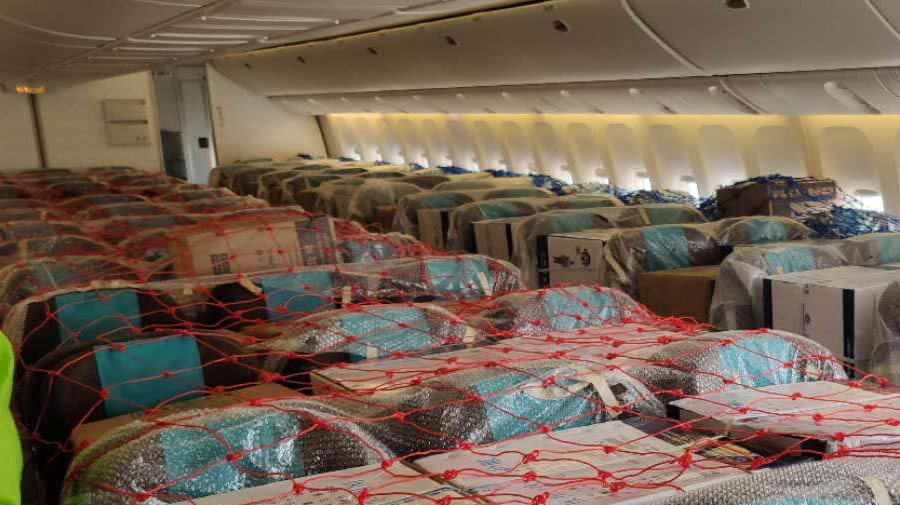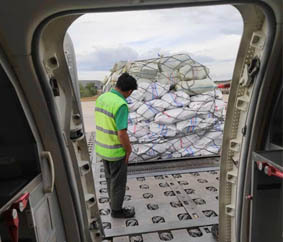
While the world is fighting against the coronavirus pandemic (COVID-19), many countries have tried to do regional isolation or lockdown temporarily. Consequently, many international airports stop all international regular flights especially from countries affected by the COVID-19 until further notice.
The next domino effects, some airlines (privates and flag carriers) stop their operation and park their planes, then they sent home their staffs and make “bitter policies” in order to survive. There was also an “S.O.S” issue to ask for government’s help.
However, there are some exceptional in some countries where international regular flights can still operate with limited operation and flights to carry cargoes or goods to smoothen logistic currents, so that the trade between countries (global trade) can still work.
Due to the regional isolation, many industries from manufacture to MSMEs stop their production, even though there are some industries still do their production for fast-moving consumer goods (FMCG), perishable goods (sea food, frozen foods, vegetables and fruits), pharmacy, and medical equipment. The last two industries (pharmacy and medical equipment) are vital and needed by more than 100 covid-19 affected countries.
Besides the freighters (a special plane to carry cargoes) with regular schedule and or chartered, many airlines companies (both who have freighters or not) contributed to give logistic solution with charter system using commercial airplanes. The cargoes are stowed in passengers’ cabin, besides the cargoes’ cabin.
The reason to reconfiguration a commercial to a cargo airplane is to keep the airplane(s) operate and to survive the airlines. However, the reconfiguration process should be done precisely and rigorously in accordance with the valid flight security and safety regulation. If it’s ignored, it will cause damage. For example, the Fire Suppression System to prevent fire is available in cargo compartment but not in passengers’ cabin.

Reported by kabarpenumpang.com, several inputs from related parties, like airplane manufactures (Airbus, Boeing, and others), regulators like EASA (European Union Aviation Safety Agency), FAA (Federal Aviation Administration) and IATA (International Air Transport Association), and CAA (Civil Aviation Authority) also tighten the cargo mechanism in passengers’ cabin. Each related party has their own important points for the configuration changes.
To keep in mind, the mechanism involves many parties since the aviation sector is the sector with various regulations, both administration and technical.
Airbus, with several notes, still allow the airline to maximize the space in passengers’ cabin by removing the seats. Boeing and FAA want the airlines to report all the changes, including cargoes in passengers’ cabin to the regulators.
The point is Boeing and FAA do not agree with the reconfiguration changes. Airlines can still maximize the cabin to arrange the cargoes on the seats covered with protective materials, under the seats, or place them in other areas as long as they do not bother the evacuation lines.
EASA is even more strict. Not only should the airlines’ crews or flight operator staffs do the control, strict checks should be conducted prior to the flight such as total cargo should concern the plane’s capacity, the cargo placement should concern the weight and balance of the aircraft, and recertification to related parties if there’s massive reconfiguration of the passengers’ cabin.
This should be done not only for the safety and security during the flight, but also as a signal that the cargoes in passengers’ cabin are not proper and not to be applied in the normal condition.
According to the news, EASA, so far, still give easiness in the operation for eight months ahead or during the crisis of the covid-19 pandemic is still alert in eight months. Moreover, EASA also suggested to make a clear and comprehensive regulation based on the research in order to minimize accidents.
The important points from IATA that various considerations should be made up when loading the cargoes across the passengers’ cabin, like protection and emphasize points against fire, weight and balance, loading safety and limitation, and more.
Working together with stakeholders, IATA has issued a guidance of safety cargo loading in the vacant passengers’ cabin (seats) in pdf format, “The Guidance for Safe Transport of Cargo in Passenger Cabin”.
Sebagai bentuk apresiasi atas dedikasi dan loyalitas para karyawan, JNE kembali memberangkatkan 44 Ksatria dan Srikandi beragama Nasrani untuk melaksanakan perjalanan rohani ke Holyland.
…DetailsMenteri Perhubungan Dudy Purwagandhi mengatakan bahwa Dewan Perwakilan Rakyat Republik Indonesia (DPR RI) khususnya Komisi V
…DetailsMenteri Perhubungan Dudy Purwagandhi menyampaikan hasil penyelenggaraan angkutan Lebaran 2025 pada Rapat Kerja dengan Komisi V DPR RI terkait Evaluasi
…DetailsJNE bersama Institut Pariwisata Trisakti (IPT) resmi melakukan penandatanganan kesepakatan kerjasama pada hari Selasa, 22 April 2025 di Auditorium IP Trisakti.
…Details